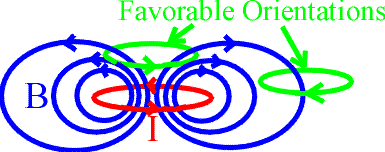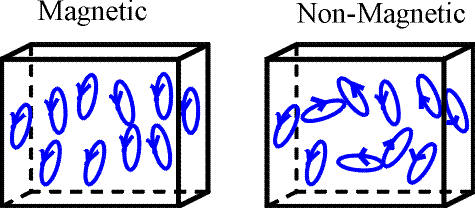Magnetic, non-magnetic, ferromagnetic.... Many atoms have electrons which are able to rotate any way they please. These rotating electrons are the dipoles which both create and respond to magnetic fields. Consider the magnetic field of the red dipole shown below.
A second dipole, shown in green will find it energetically favorable to line up in the same direction as the red dipole if it is placed directly above it, but will find it favorable to line up opposite to the dipole if it is place to the side. The study of properites is therefore a rather complex subject. There are a variety of classifications of magnetic materials.
Here we list three such classifications.
|









